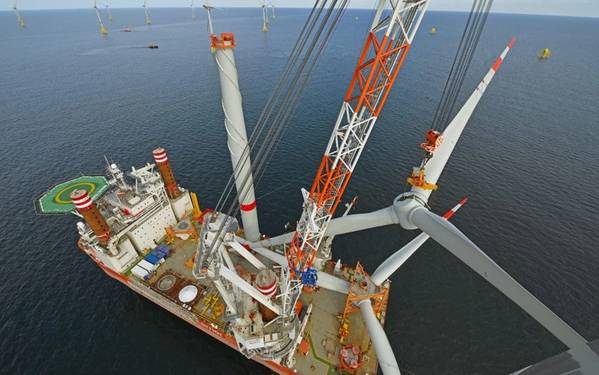
UK (and Norwegian) taxpayers are largely footing Equinor’s wind-energy success by helping the offshore oil, gas and renewables player operate a healthy profit and hand out dividends, Norwegian news reports have been trumpeting of late.
It was Stavanger Aftenblad, the regional newspaper in oil town Stavanger, that reported the company’s still heavily subsidized offshore wind farms were making a hefty profit.
The trouble is, most of it is still steeped in subsidy from taxpaying Britons. In a series of articles, the newspapers revealed Equinor entities registered at 1 Kingdom Street in London or the state-owned conglomerate as a whole was earning big from its wind farms.
The 88-turbine Sheringham Shoal wind park off the Norfolk coast has, the newspaper reckons, earned a pre-tax profit of 673 million kroner (USD 72.8 million) on 1. 8 billion kroner (USD 194.8 million) in turnover.
Dudgeon, in 2018, earned Equinor (40 percent owner, operator) a billion kroner in profit on 2.7 billion in turnover. “That’s good business,” Norwegian DN wrote. “Subsidies make up a significant share of earnings.”
They noted that grid owners at Dudgeon saw a healthy 7 billion kroner in dividends. The novel, five-turbine floating wind project, HyWind Scotland, earned less, or 106 million kroner.
Despite the guaranteed earnings and plans to be “zero-emissions” soon, Equinor said in London on Thursday, that it would continue to explore for and produce hydrocarbons.
Gas prices are seen rebounding, CEO Eldar Saetre told CNBC, and the plan is to produce more oil and less gas in the short-term. The company plans to spend upwards of USD 11 billion on oilfields and “other investments” in 2020, or about the same as in 2019.
Equinor renewables boss, Paal Eitrheim, revealed numbers on Thursday that indicate planned CAPEX for wind will jump to USD 2-3 billion — before (subsidy) — by 2023.
Annual gross wind CAPEX today is between USD 500 million and USD 1 billion.
Wind major
Meanwhile, Equinor’s U.S. projects Empire Wind and Dogger Bank, now vetting supply chains, are expected to supply wind energy to five million households unaccustomed to subsidy.
“Our gross share of investments in these projects will be upwards of 80 billion kroner in the period through to 2026,” Equinor spokesperson, Eskil Eriksen, was quoted by the newspaper Nationen, as saying.
Equinor said the fourth-quarter earnings reporting marked the beginning of a six-year green-energy splurge.
Already, USD 135 million is its deposit on a US HyWind license
The company plans, in short order, to increase tenfold its renewable energy production.
Norwegian NRK, however, reported Equinor’s locally developed HyWind floating wind is also still heavily subsidized. HyWind Tampen — a 5-billion-kroner floating Norwegian wind park —reportedly required just 10 percent company financing, with the public purse picking up the rest.
Meanwhile, the Norwegian offshore heavyweight has sold down by 25 percent its stake in German Arkona Windpark. Germany recently removed subsidies for offshore wind.